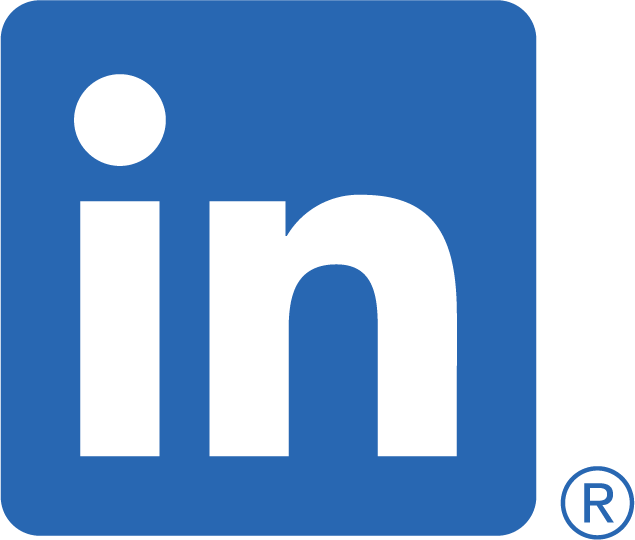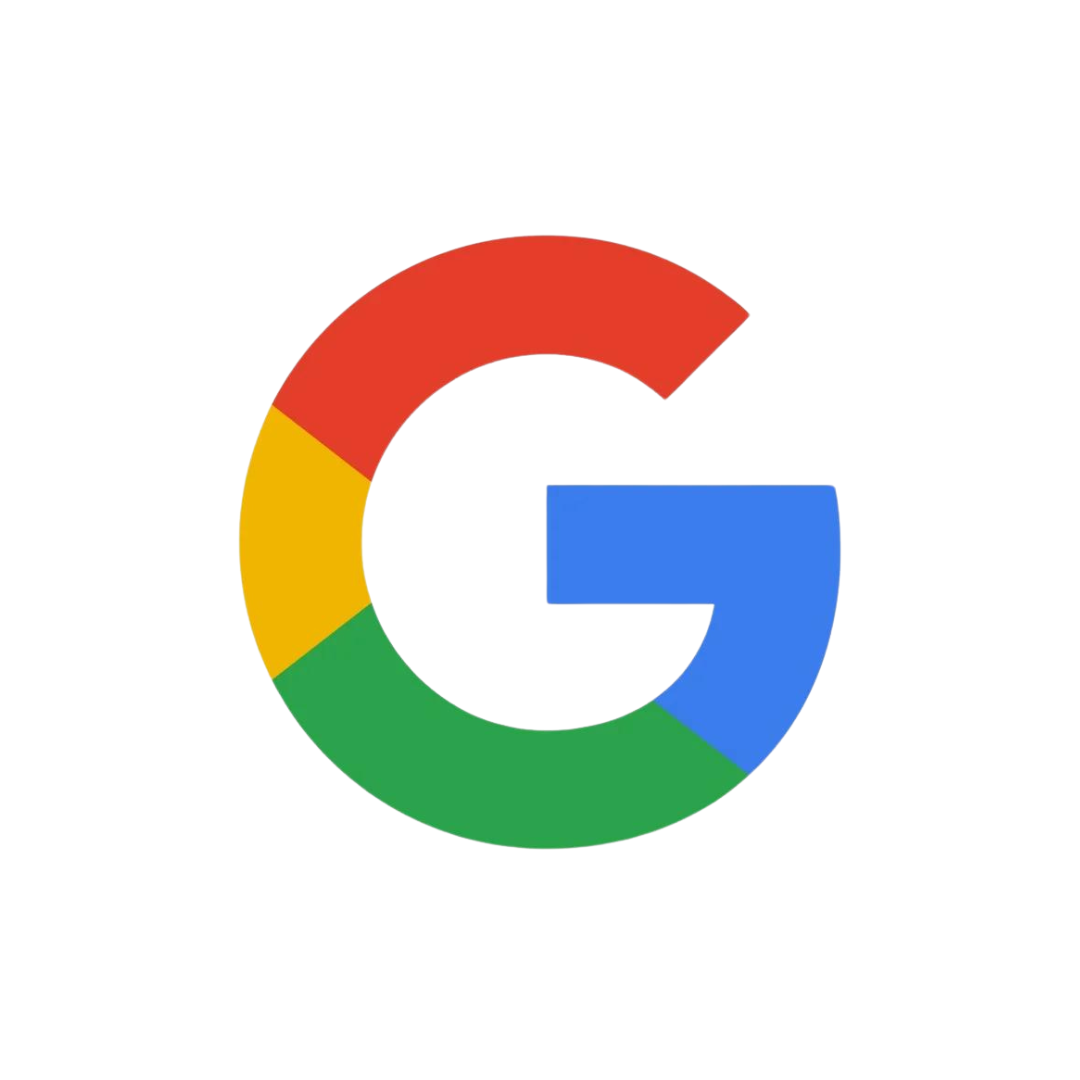Blog
Blog

By Trevor Robichaud
•
November 13, 2024
The Risk of No Strategy Understanding the importance of a well-defined content strategy requires acknowledging the risks of not having one. Without a content marketing strategy, you may be vulnerable to competitors and risk underperformance. According to the Content Marketing Institute, 73% B2B and 70% B2C users have incorporated content marketing into their total marketing strategy, and 40% B2B marketers have documented content marketing strategies. Establishing your strategy is crucial to avoiding losing market share to competitors. As noted in the previous section, modern consumers lack the patience that was once attributed to them. The immense amount of information available online has made the modern consumer more careful when seeking information about products or services. This requires a clear understanding of how this audience may be effectively engaged. Establishing Direction Regardless of the company's goal, be it brand building, increasing Web traffic, generating leads, or boosting customer interaction, having a structured plan ensures that every piece of content created aligns with these goals. Consider what you are trying to create, and remember what results you hope to gain from this content. An easy starting point is to think about your buyer's personas. This provides valuable insight into your prospects, allowing you to identify their unique pain points and goals. Creating high-quality, targeted content proves your understanding of potential prospects and that your business is the right solution. In addition, you should regularly perform content audits. Evaluate the content you already have and identify any gaps in the message you're trying to convey. Additionally, you should be reviewing what performs well and what doesn’t - so you can focus on what actually produces results instead of wasting time. Luckily, Alterra Digital can assist your business with mapping out its content strategically and help determine what your business needs to do to grow online. In the meantime, here is some free value from our dedicated team of content creation experts. Remember, Alterra Digital is your one-stop shop for all things marketing; we won't just tell you what needs to be done; we can also get it done for you - and get it done well. Content Marketing Statistics Use this data to inform your business's content marketing strategy. Short-form video content (TikTok and Instagram Reels) is the number 1 content marketing format, offering the highest return on investment (ROI). (CMI) 43% of marketers reported that original graphics (infographics and illustrations) were the most effective visual content. (Venngage) 72% of B2C marketers expected their business to invest in video marketing in 2022. (CMI) Articles containing at least one video tend to attract 70% more organic traffic than those without. (Semrush) Interactive content generates 52.6% more engagement compared to static content. (Mediafly) Marketers who are using AI said it helps most with brainstorming new topics (51%), researching headlines and keywords (45%), and writing drafts (45%). (CMI) Edited by Wyatt Wolfman

By Trevor Robichaud
•
November 8, 2024
Inbound Marketing is a strategy focused on attracting customers through relevant and helpful content rather than interruptive ones. It aims to create value and build trust by providing potential customers with the information they seek. The core idea is to pull customers towards the brand using various forms of content. Examples of Inbound Marketing: Content Marketing: A business publishes informative, attention-grabbing content, such as a blog post or article that answers common questions or solves potential customers' problems. For instance, a health and wellness company might post about ways to battle an upcoming flu season. Social Media Marketing: Producing and sharing content on social media to keep the audience engaged, build communities, and drive traffic toward websites. For example, directly responding to reviews/comments or posting interactive polls. SEO: Optimizing content on the website itself ranks high in search engine results and makes it more searchable for probable customers looking for related information. Email Marketing: Timely and relevant emails to subscribers who opted to receive the communication from the brand. Outbound Marketing , also known as traditional marketing, is the act of sending a message to everyone and anyone, whether or not they have shown interest in the product or service on offer. It is more interruptive and includes direct methods of advertising. This marketing approach strives to reach the largest possible number of prospects via many diverse channels and hopes the message spoken sticks to some. Examples of Outbound Marketing: Television and Radio Ads: These ads run during programs to appeal to the general audience and sell a product or service. Print Advertising: Newspaper, magazine, brochure, and flyer ads distributed to the public. Cold Calling/Cold Emailing: Calling or emailing a potential customer without any prior contact on their part. Direct Mail: Catalogs, postcards, and letters being mailed directly to the customers' mailboxes. Inbound vs Outbound Statistics Inbound marketing strategies generate 54% more leads than outbound paid marketing strategies. (HubSpot) Inbound marketing generates leads at a rate of 62% cheaper rate (cost per lead) compared to outbound marketing strategies. (Mashable) 71% of B2B purchasers consume blog content at some point in their buying cycle. (Content Marketing Institute) The average open rate for all industries of an email marketing campaign is 17.80%. (WifiTalents) 86% of people skip TV and online ads. (WifiTalents) Why you should use both: These statistics substantiate that inbound marketing is a more cost-effective approach that engulfs customers throughout their buying journey. It's helpful to consider "Inbound vs Outbound" as a spectrum and understand that most successful businesses use both approaches. While inbound marketing is ideal for building long-term relationships, targeting specific audiences, and being cost-effective, outbound marketing is still an essential tool for broad brand awareness and immediate impact. Many businesses find the best results come from a balanced approach that weaves in both inbound and outbound strategies. For example, a wellness company can blend inbound and outbound marketing strategies by creating information worth sharing—such as blog posts and social media tips related to nutrition and fitness—to attract and educate online prospects. Meanwhile, they are executing very targeted TV and radio ads bragging about their new products and special offers to drive brand awareness to the masses. This allows them to effectively capture leads with informative inbound content to build trust, coupled with far-reaching outbound campaigns. Need help marketing your business? Look no further than Alterra Digital, your one-stop shop for all things marketing. Schedule your free consultation here . Edited by Wyatt Wolfman

By Trevor Robichaud
•
October 3, 2024
Signs Your Website May Be Holding Your Business Back 1. Outdated Design: An outdated website design can instantly turn potential customers away. If your website looks old-fashioned or cluttered, it gives the impression that maybe your business isn't up to date either. Modern designs are minimal, easy to navigate, and visually appealing, reflecting trustworthiness and professionalism. How this hurts you: An outdated look and feel reduces brand credibility, causing users to be more skeptical about engaging or buying. Let's take a look at these screenshots from Microsoft's website in 1996 and 2020 from Web Design Museum to obtain a better understanding of what outdated design really is. While this example is drastic and from 28 years ago, many business's today have a website that looks much more like the 1996 example than the 2020 example, and this is holding them back.

By Trevor Robichaud
•
September 17, 2024
Getting Started Many brands naturally fit into TikTok's video format since it is relatively easy to show their products in action with short clips. However, this format could not prove so easy for other brands offering services that are not easily visualized. For instance, in the financial service industry, the need for detailed explanations in building trust may not be fully achieved with short, entertaining videos. Before delving into the actual process, it is crucial to conduct brand research to understand if your services can be fully represented in a short-form video. Step One: Installing the TikTok Pixel Once you have built your ad account on TikTok, you should utilize a specific tool, TikTok Pixel. A TikTok pixel is a piece of JavaScript code that can be inserted into any website. It is used to track users' activities and is then reported back through TikTok. The pixel can be used to: Measure traffic: Track website visitor actions like page views, purchases, add to cart, signing up for newsletters, and more. Measure ad performance: See which ads drive the most sales and optimize campaigns. Track return on investment (ROI): Understand which ads are performing well and which aren't. With the TikTok Pixel in your advertising arsenal, you can measure, analyze, and optimize current and future campaigns to achieve maximum effect with the highest possible ROI. Instructions: Open TikTok Ads Manager, hover over Assets, click Event Click Manage, which is under Web Events Click Set Up Web Events. Click TikTok Pixel as your connection method, then Next. You can install your Pixel by adding the code snippet to the header of your website’s HTML code. Step Two: Create your campaign. Next, log in to TikTok Ads Manager and click the Campaign button on the top menu. On the campaign page, click Create. After creating a campaign, you will be requested to choose between a Basic Mode or an Advanced Mode. The Basic Mode is made quickly and in four steps. The Advanced Mode offers more detailed options. This guide will go through the Advanced Mode. In addition, TikTok will request that you choose an objective initially. The objectives are categorized into three different groups: Awareness: Raise brand awareness. It is ideal for top-of-tunnel campaigns that raise reach or earn followers. Consideration: This campaign is suitable for middle-of-tunnel campaigns and will drive website visits, boost engagement, and enhance video views. Conversions: Generate leads, increase website conversions, or get job applicants (bottom-of-funnel) For tips on website design trends that boost conversions, stay tuned for our upcoming article "Website Design Trends That Boost Conversions" . Finally, name your campaign and set your budget. S tep Three: Create an Ad Group Now, let's jump into the second level of your TikTok ad campaign—Ad Groups. First, assign a name to your ad group and choose your target audience based on demographics (location, gender, age, language), advanced targets (audience, interests, behaviors), and device used. The advanced option allows you to target your audience further by allowing content exclusions. Exclusions: Content exclusions are set to Standard by default. This is where you determine whether your content will run with mature-themed content. You are given three options: full inventory, standard inventory, and limited inventory, all with different levels of content exclusion. Applying this to your ad group will allow you to reach the intended user. Lastly, upload your ad content, write a caption, and link the ad to your brand website or landing page. L ast Tip TikTok marketing has a huge opportunity to leverage popular creators to promote brands authentically and engagingly. This approach boosts brand awareness, drives higher engagement, and increases conversions, making it a vital part of any TikTok marketing strategy. For more information on implementing this strategy in your TikTok marketing, check out this article (Power of influencer marketing article). If you need help navigating the complex world of digital marketing, look no further than Altera Digital, your one-stop shop for all things marketing. Schedule a free consultation here. When To Run Ads on TikTok Timing is everything when it comes to running ads on TikTok. A poorly planned ad schedule can result in a waste of ad spend. That is why understanding the peak engagement hours/days on TikTok is essential to maximizing your return on ad spend. Peak Engagement: According to research, one of the best times to run ads on TikTok is between 6 and 10 p.m. There’s an easy explanation: viewers may be winding down from their workday or looking for entertainment before bed, making them more open to discovering and engaging with new products. Additional research has shown that weekends (especially Saturdays) are another period of increased engagement on the app. Holidays: Shopping holidays are another excellent time to post ads on TikTok. Many users are actively searching for deals and are already in a buying mindset. You can tap into the festive mood and drive higher engagement by aligning your ads with holiday themes, promotions, or special offers. Targeting key holidays and planning your campaigns with that in mind is another solid way to amplify the impact of your TikTok ads massively. However, choosing the right time to post doesn’t always depend on fixed hours or days of the week. Understanding your customer's wants and needs can go a long way toward choosing the proper ad schedule. For example, a sleep medication company wouldn’t post TikTok ads in the morning. Instead, by understanding its customer demographics (people who are having trouble sleeping—likely scrolling through TikTok during the night), it would adjust its ad schedule to post during late hours, ensuring a more relevant reach. Getting to know your customers can be a challenging endeavor. Luckily, Altera Digital provides a digital audit service that analyzes your business’s needs and can provide you with a customer report, helping you understand what your customer needs/wants. To learn more about digital audits, check out this article (Link to “Digital Marketing Audits: The Key to Proactive Change”) While Alterra Digital is not affiliated with TikTok, we can provide expert advice to help your business run higher ROI advertisements on one of the fastest growing platforms in the world. Edited by Wyatt Wolfman

By Trevor Robichaud
•
September 12, 2024
When and why should you use LinkedIn Ads to promote your business? First and foremost, it is one of the most critical tools B2B enterprises have at their disposal, helping them effectively reach and engage high-value prospects. This platform is vital for generating leads, building online recognition, and sharing valuable content. In addition, according to statistics provided by LinkedIn itself, it has the largest professional audience, is six times more likely to convert, and has two times the buying power of the average web audience. Running LinkedIn ads increases your business presence, raises brand awareness, and generates more opportunities to drive sales and engage high-value prospects. This guide will walk you through implementing LinkedIn Ads into your marketing strategy and further detail some unique benefits. Step 1: Identify Your Marketing Objective Log in to the LinkedIn Ads Manager and set the campaign's objective. You will be given three main goals: Awareness: Raise brand awareness. It is ideal for top-of-tunnel campaigns that raise reach or earn followers. Consideration: This campaign is suitable for middle-of-tunnel campaigns and will drive website visits, boost engagement, and enhance video views. Conversions: Generate leads, increase website conversions, or get job applicants (bottom-of-funnel) For tips on website design trends that boost conversions, stay tuned to our blog for our upcoming article "Website Design Trends That Boost Conversions”. Your objective will shape the rest of your campaign setup process, influencing ad formats, targeting, and budgeting decisions. Step 2: Target Your Audience A successful campaign is about proper targeting. Fortunately, LinkedIn's data is excellent, given that people have professional reasons to ensure their profiles are accurate and up-to-date. Use LinkedIn's targeting tools to define your audience by selecting from more than 20 category options, such as company size and name, member schools and interests, job title, seniority, skills, and member groups. Proper targeting ensures your ads reach the right professionals, leading to higher engagement and conversion rates. Step 3: Choose Your Ad Format Within the LinkedIn Campaign Manager, you have the power to choose which ad format will be used. Let's discuss the characteristics and benefits of these four. Sponsored Content: Native ads in the feed. You can customize with various ad formats, such as single image, video, and carousel ads. Carousel ads are swipeable series of photo cards that let you create dynamic content. Message Ads: Direct messages to LinkedIn inboxes are more effective than regular email marketing and incentivize immediate action. Dynamic Ads: Personalize the ads for each LinkedIn user. Text Ads: Simple and clickable on the sidebar. This option is based on pay-per-click, which means you will pay only for the ads that work. An appropriate ad format will help engage with your target audience. Step 4: Set Budget and Schedule Set a budget and schedule for your campaign by selecting a bidding option: Cost per Send: Pay per delivered message for Message Ads. CPC: Pay per click, best for lead generation or event registration. CPM: Pay per thousand impressions- best for brand awareness. Suggest the bid daily budget, start and end dates, and total budget. Step 5: Ad Creative and Optimization Next, develop an eye-catching ad creative. Remember these components: Imagery: Use bold, recognizable visuals to drive engagement. Copy: Craft clear, concise, and persuasively written text. Format: Mix and match ad formats to keep your audience engaged. After launching your campaign, head to LinkedIn Campaign Manager to see how it's performing. Monitor the essential metrics—like impressions, clicks, social actions, and budget use. Then make adjustments where needed: Edit underperforming ads. Narrow or broaden targeting criteria. Shift budget into top-performing ads. By optimizing regularly, you'll drive better results and get the most value from your investment. When To Run LinkedIn Ads Let's take a look at some data regarding LinkedIn engagement from Sproutsocial .

By Trevor Robichaud
•
September 10, 2024
How to Run Google Ads Wondering how to create, manage, and optimize Google Ads campaigns step-by-step? In this blog post, we will go over every step of creating, managing, and optimizing your Google Ads campaigns. Whether you are a small business looking to drive more local traffic or a marketer seeking broader brand exposure, mastery of Google Ads can help you reach these objectives. From setting up an account to choosing the right keywords, this guide provides the tools and insights you need to succeed in the competitive landscape of online advertising. Organizing your Account Setting up a Google Ads account for success from the very beginning involves developing a structure that mirrors your business. For example, you need to categorize your products or services and base your account structure on these categories. A Google Ads account has two tiers: campaigns and ad groups. The campaigns are the highest order, with the ad groups being a subset of campaigns. You can have many ad groups within each campaign. You can think of campaigns as broader categories within your business and ad groups as more narrow subsets of products or services. For example, if you operate a fitness equipment store, you may structure your account like this: Campaign 1: Cardio Equipment Ad Group 1: Treadmills Ad Group 2: Exercise Bikes Ad Group 3: Ellipticals Campaign 2: Strength Training Ad Group 1: Dumbbells Ad Group 2: Kettlebells Ad Group 3: Weight Benches This structure enables you to craft more focused ads and ensure that shoppers see the most relevant content that interests them. Choosing Your Ad Format Google offers a variety of ad formats tailored to different campaign types and goals. Multiple ad types can be managed within a single Google Ads account, and sometimes even within the same campaign. Here's a breakdown of some of the critical ad formats: Text Ads: This format of ad incorporates only text. Text ads are ideal for reaching customers directly when they search on Google. They are relatively easy to compile and update, and with the addition of ad assets (additional details and contact information), they become highly relevant to users. They are mainly applied in Search campaigns. Responsive Ads: These ads automatically adapt to the size, look, and format of available inventory spaces to automatically change into text or image ad formats. They can also appear as native ads (paid media designed to match the content of a media source), blending seamlessly into websites to increase impact. Because they're so adaptive, responsive ads may be used for both Search and Display campaigns. Image Ads: Static or animated ads that are perfect for visually showcasing a product or service on Google's partner websites. They are used within Display campaigns. App promotional ads: These are tailor-made to increase app downloads and engagement. They might direct users to an app download in an app store or deep-link inside an app. These appear on Google Search, Google Play, and partner websites and apps. Used in App Campaigns. Setting Your Budget You control your spending in Google Ads with two settings: your daily budget and your bids. The daily budget will refer to how much you would like to spend on a campaign per day, while the bid is what you are willing to pay for one keyword when someone clicks on your ad. Initially, it can be beneficial to distribute your overall budget evenly across campaigns to identify which ones perform best. Adjusting campaign budgets and bid amounts based on your business goals is essential. For instance, you can adjust for a higher budget if you want to push more of your "Strength Training" products during a specific holiday/season. Note that you can edit your budgets and bids for optimum performance at any time. Selecting Keywords The success of any ad depends on the selection of keywords. Make use of the Google Ads tools like Keyword Planner to generate an array of keywords for your campaigns. You can also find an estimated bid through this tool, thus keeping yourself safe from overspending caused by high competition in keywords. Initially, targeting low-to-medium-cost keywords can provide decent exposure while also allowing you to test your campaigns' effectiveness. Google Ads will also allow keyword match types to filter when your ad will show. These include: Broad Match: An ad will show when someone searches for terms related to the keyword. Phrase Match: The ad shows during searches that include the meaning of the Keyword. Exact Match: Shows on searches with the exact meaning or intent as the Keyword. Negative Keywords: Excludes terms to prevent irrelevant traffic. Master Advertiser Tip: Remember that your ad is usually the first touchpoint with a business; let it be dynamic, engaging, and relevant. Add keywords and create a clear call to action like "Shop now" or "Learn more." For additional guidance on setting up your Google Ads account or help creating ad copy, look no further than your marketing one-stop-shop, Altera Digital. Schedule your free consultation here . *Alterra Digital is not affiliated with Google.* Edited by Wyatt Wolfman

By Trevor Robichaud
•
August 9, 2024
Running advertisements on Yelp is a very powerful means of attracting visibility and customers to your business (and away from competitors). The following steps will help you set up a successful ad on Yelp and unlock its full promoting potential. Define Your Campaign Goal The first thing on your to-do list is to determine the main goal of your ad campaign. The options are, increasing phone calls, driving more website clicks, or letting Yelp’s algorithm choose for you on a situational basis. For instance, a merchandiser who wants to drive online sales may want to select "get more website clicks," while an electrician seeking leads may prefer "get more calls," and a business seeking more leads in general will elect for Yelp’s automatic system. Yelp recommends that you elect for Yelp’s automatic system to chose for you whenever possible to take advantage of the powerful algorithm that will place the right call to action buttons on your ads for the right people, generally leading to more conversions. Allowing Yelp to optimize this goal will run several call-to-action options and select the one it believes is most likely to generate the most engagement. Making Your Advertisement Next, you should Invest in choosing a proper photo and text for your ad. You can let Yelp optimize your ad’s picture by testing different photos to see which ones work best, or you can select a specific one from your gallery. The optimized option means that only the picture with the highest click-through rate is utilized when running your ad. Additionally, use ad text to highlight what makes your business unique. Craft custom ad copy including details like your business' history, whether or not it is family-owned, free estimates, 24-hour operations, or delivery. Attention-grabbing ad text influences potential customers to tap on your ad. You can also feature a customer review or let Yelp test and pick the best-performing text for your business. Check and Edit Keywords Yelp will automatically select keywords from the business profile, ensuring your ad appears on relevant searches. Reviewing the chosen keywords and prioritizing the most crucial ones is important. When these prioritized keywords have been used, Yelp will try to show your ad more frequently. You are also free to exclude certain keywords (negative keywords) in case they do not pertain to your services, ensuring proper targeting. Determine the Location for Your Ad Yelp ads take it a step further, allowing location-based targeting, which sets the geographic radius of your ad. You can specify the setting so that your ad shows within a given radius of your business's location. This can be particularly important for businesses seeking to target either a wider area or a specific location. The size of the radius can vary by category or the success of a specific ad. Set Your Budget You can choose a default daily average budget that works for your business. By default, Yelp will suggest a budget based on the common spending of your respective industry. However, you will also have the option to set a custom budget. You can see an estimation of received clicks based on your budget and the estimated CPC (cost-per-click). Note that you will pay only if someone clicks on your ad. In addition, the CPC can swing up and down according to demand and area. The budget you set is a daily average, meaning your actual daily spending can vary but won't exceed your monthly maximum. Why Run Yelp Ads? Yelp users are ready to buy, visit, and hire. Yelp ads allow your business to target these consumers who are ready to spend. There are 80 million unique users coming to Yelp each month. 85% of those users come to Yelp unsure about which business to patronize, and 97% make a purchase after visiting Yelp (data from SurveyMonkey, Yelp internal data, and Media Metrix). Yelp ads can also place your business above your competitors, helping to win valuable market share. Looking for assistance with running effective Yelp ads for your business? Alterra Digital is here to help. Schedule your free consultation now. Edited by Wyatt Wolfman

By Trevor Robichaud
•
August 5, 2024
The Basics of Facebook Ads Facebook Ads offer a great way to increase exposure online through reaching a wide and targeted audience for a relatively low cost. In the sea of its users, companies can take advantage of the huge traffic found on the platform to showcase customized ad content matching the desired demographics, interests, or behaviors. Such precise targeting allows for much more effective campaigns that evoke better engagement, increased awareness, and higher returns on investment. Facebook, 20 year old industry titan, has some of the most consumer data out of any company (competing only with Amazon). With the help of Facebook Ads, detailed analytics and insight help businesses fine-tune their strategies to continue reaching their marketing objective. Let's dive into a step-by-step guide on making your high return on ad spend Facebook Ad today. Step 1: Select Your Ad Type Choosing the correct type of advertisement is critical since it directly affects the efficiency and effectiveness of the advertising campaign. Each type of ad serves a different purpose, catering to distinct marketing objectives. Boost a Post: This feature boosts engagement on a specific post. It is ideal for businesses looking to increase likes, comments, and shares on their existing content. Boost a Post on Instagram: Maximize the visibility and engagement of a post in Instagram. This is best for businesses targeting an Instagram audience and looking to drive more engagement on their content within this platform. Create New Ad: Create a custom ad campaign from scratch. Ideal for businesses driving for specific objectives, for example, driving traffic to a website, generating leads, or promoting a new product or service. Automated Ads: These are ads that Facebook's algorithm creates and optimizes to achieve the desired business objective. This approach is best for businesses that want to be hands-off and let Facebook's AI determine the best ad formats and placements. Step 2: Define Your Objective In the next step of this process, Facebook will ask what the objective of your ad is. It's crucial that you choose the right objective because it will make your advertising or marketing efforts work in the direction of your business goals. Your objective will also tell Facebook how to deliver your ad—optimized for the best results. Such objectives include sales, leads, engagement, traffic, awareness, and app promotion. Step 3: Ad Creative An ad creative is simply an actual ad to be served up to people. It can be broken down into three different parts: Visuals: These constitute your eye-catching photos. A visual is important in catching someone's interest and making a great impression about a piece. They convey your message quickly and sharply, making the ad more memorable and engaging. Text: It should support the image to drive a customer to action. This will contextualize your visuals, emphasize key messages, and persuade the audience to an ad. Action Button: This button directs users to the next action. It is very important for conversion and may direct them to your website, purchase, or subscribe to your newsletter. It provides explicit calls to action that bring the users closer to what you want as the result of your ad campaign. Without a good CTA, people would see your ad and have no idea what to do next. Step 4: Define Your Audience Defining your audience is one of the keys to running successful Facebook Ads. Create ads that resonate with one group or another, start with a broad audience, and adjust according to performance data. Take advantage of advanced targeting features on Facebook to refine your campaigns further. Consider interests and traits within your audience and use insight customer tools such as Meta and Advantage+ Audience to finetune targeting or find your target automatically. Step 5: Ad Placement Proper placement of your ads is important in a successful Facebook ad campaign. Ad position remarkably affects the viewability, engagement rate, and overall ad performance. Now, Facebook allows you to choose a variety of placements through which to show your ads. They are: Facebook News Feed, Instagram Feed, Facebook Stories, Instagram Stories, Messenger, and Audience Network: Facebook News Feed: Audience: Those browsing their main Facebook feed. Best for: High engagement post with numerous likes, comments, and shares; broad reach. Instagram Feed: Audience: Instagram main feed scrollers. Best for: Brands wanting an attractive way to engage a young audience by using the natural visual of Instagram. Facebook Stories: Audience: Ephemeral, short-lived-content viewers. Best for: Quick, engaging content that drives urgency and direct response using Swipe Up links, etc. Instagram Stories: Audience: Instagram Stories viewers Best for: Immersive, short-form communication that's visually engaging and drives action in the moment Messenger: Audience: People messaging with Facebook Messenger Best for: One-to-conversation and message replies Audience Network: Audience: People using mobile devices on third-party apps and websites Best For: Reaching beyond Facebook and Instagram Step Six: Budget & Schedule Budget and schedule are other crucial aspects while setting up your Facebook Ad campaign. This means setting the ad budget based on the desired days. That way, by proper budgeting and duration, your ad will be able to reach its desired target—hence, it will be cost-effective. Typically, you'll use a daily budget—the rough average amount you plan to spend on your ad daily. For example, if you set your budget to $10 per day, Facebook will try to spend as close to that amount each day for the best possible performance of your ad with that constraint. Step Seven: Publish Your Ad! Conclusion In summary, creating a great Facebook Ads campaign is about picking the right ad type, setting clear objectives, making compelling ad creatives, targeting the right audience, picking optimal ad placements, and setting an effective budget and duration. These steps help gain maximum value from advertising efforts and deliver a robust return on investment. Alterra Digital Can Run Effective Facebook Ads for Your Business If running Facebook ads has been a struggle for your business or seems too daunting to try yourself, we are here to help. Alterra Digital specializes in running effective Facebook ads for our clients. Want help navigating how to make your mark in a digitally dominated marketing world? Schedule your free consultation below. Alterra Digital is not affiliated with Facebook. Citations https://blog.hubspot.com/marketing/facebook-paid-ad-checklist https://www.facebook.com/business/learn/lessons/create-facebook-ads-from-facebook-page Edited by Wyatt Wolfman


Address
3343 Peachtree Rd NE
Ste 145-2670
Atlanta, GA, 30326
Quick Links
© 2023 Alterra Digital
